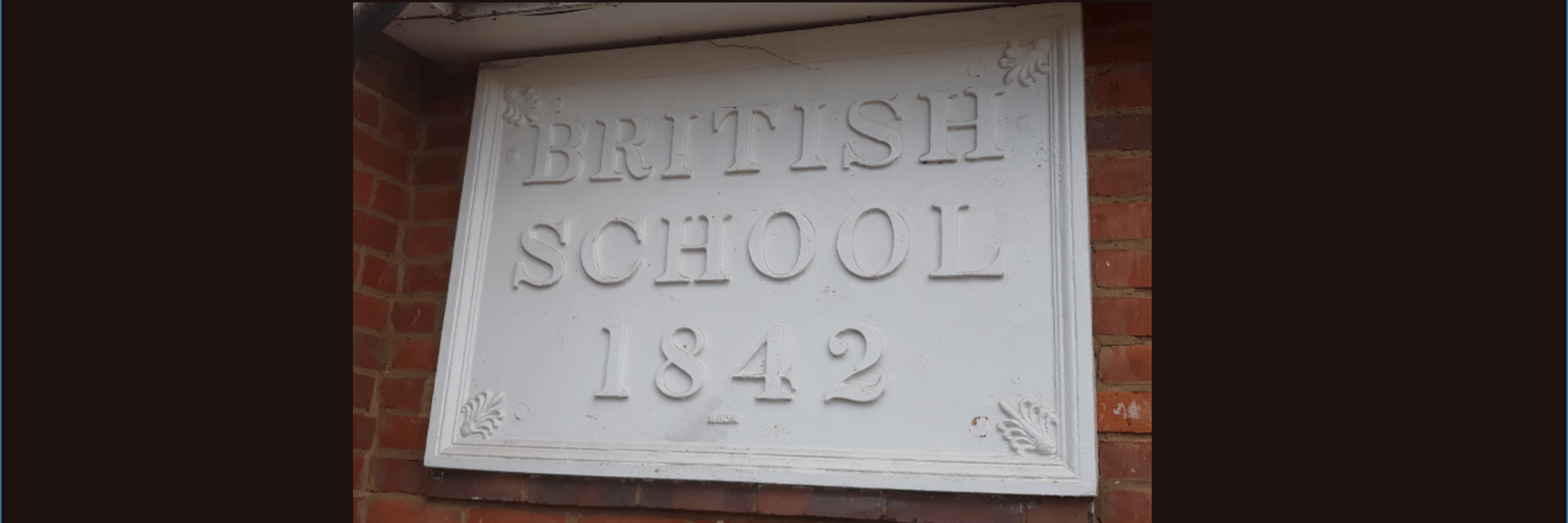By Gwyneth Wilkie, September 2019
Introduction
My interest in this subject was sparked by seeing the plaque outside the Baptist Lower Chapel in Amersham and wondering what a British School might have been like. Very little information was available in any of the histories of Amersham and it was only briefly mentioned in the Minute Books of the Lower Chapel.
What follows has been pieced together from a number of different sources. Warmest thanks are due to archivist Phaedra Casey and her assistant Sarah Trim-West for identifying relevant material in the very extensive collection in the British and Foreign Schools Society Archive held at Brunel University and tirelessly producing heavy boxes which might contain a single relevant letter! Several such documents are reproduced here and their kind permission is most gratefully acknowledged. ‘For further details of this archive see Archive | The British & Foreign School Society
I am also very grateful to Barbara Webber who undertook the tedious task of proof-reading and made many valuable suggestions. Whatever blemishes that remain can be attributed to the carelessness or obduracy of the author.
The short biographies have drawn on the usual sources familiar to genealogists — censuses, registers of baptisms, marriages and burials and newspapers and have been written so that it should be apparent where the information may be found.
Two sections on religious and educational background have been included in the belief that the Baptists’ determination to have a British School, and their achievement in setting one up, cannot be adequately grasped unless we accept that relations between the Church of England and the various nonconformist denominations were very different from what we are accustomed to in this much more ecumenical age. Attitudes to education are also different in an age when school attendance was not compulsory. Not everyone was convinced that literacy was beneficial or that education should be available for all children.
Contents
- Amersham Schools in 1842
- Nonconformity in the 1840s
- Why choose a British School?
- Establishment of the British Schools in Amersham
- The Amersham British Schools 1841- c1867
- Schoolmistresses and Schoolmasters
- Closure
- Sources
- Aids to Further Research
- The British Schools Museum, Hitchin
Appendix 1 Adverts for teaching posts
Appendix 2 1864 Report on Dr Challoner’s Grammar School
Appendix 3 Classification of Day Schools in 1851
Appendix 4 A list of teaching materials available from the BFSS Depository

